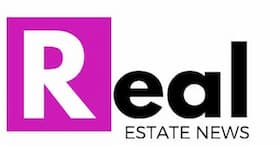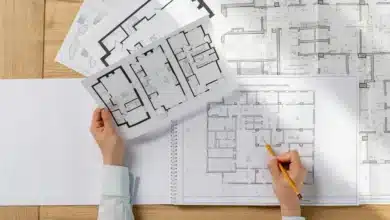Ways to Make Your Next Property Move
5 Ways to Make Your Next Property Move Financially Smarter
Whether you’re planning to move to a new place or add a new property to your growing real estate portfolio, one thing’s clear: securing a piece of real estate can be a tough, exhaustive process.
Between material procurement, utility installation, and signing ownership paperwork, real estate owners should consider multiple variables when approaching a property acquisition.
And if you’re balancing the act of cost-cutting and working within a specific deadline, it won’t take a lot to feel instantly overwhelmed by the whole ordeal. That said, there are ways you can prepare yourself to ensure your next move doesn’t eat up a lot of your budget.
If you want to reduce the cost of your next move, then read on for some insightful tips to make the most out of the move without completely wiping your finances dry.
Let’s jump right into it!

1. Reduce Interest With The Right Bank Account
Most incoming homeowners save just enough to secure a down payment, which amounts to about 20 to 30% of the house’s total purchase price. For the remainder of the balance, homeowners typically pay it off through a home loan or mortgage over a fixed term with interest.
The total term length can span 20 to 30 years, which is no small obligation. The interest charge, in particular, can contribute to the borrower spending thousands, if not tens of thousands, more over the course of the loan.
As such, it’s a good idea to find ways to reduce the amount you’ll be paying in interest over time—or at the very least, make it so that your cash flow isn’t wholly dedicated to the home loan every month.
One effective method is to apply for the right bank account to grant you a little more flexibility in how you pay for your loan. In Australia, you can consider opening an offset account to reduce the fee you’re paying for the home loan.
In essence, an offset account works by linking a transaction account from your bank to your mortgage loan. The balance in the offset account will be deducted from your home loan’s total amount, and the resulting amount will be the balance for which interest will be calculated.
Here’s how it works: if your loan is $400,000 and you have $30,000 in your offset account, then you’ll only be charged interest (based on your pre-arranged interest rate percentage) as if you only have $370,000.
This mortgage reduction can contribute to sizeable savings over time, freeing you to use the excess savings to pay off expenses or secure other investments. You can even clear your loan more quickly with the reduced interest, easing your financial burden and allowing you to grow your money faster.
Another alternative to opening a dedicated offset account is by taking advantage of redraw facilities. This feature is available on many mortgage plans, and it essentially lets you make extra repayments on your loan and withdraw them later if needed.
A redraw facility reduces your interest burden while offering flexibility, which is ideal for borrowers who want both savings and access to funds when necessary. This article from Westpac goes into greater detail on the difference between offset accounts and redraw facilities for your convenience.

2. Vet All Possible Financing Options
Not all home loans cover the cost of your chosen property optimally. Some may lock you into a long-term contract with a high interest rate that you can’t afford, while others could bundle you with multiple loan products that you don’t actually need.
To ensure you’re getting the best bargain, you should review loan products across multiple lenders and compare them against each other to figure out the best one.
The criteria you’ll end up choosing are ultimately yours to make, but preferably, you should consider the length of the loan, the flexibility of repayments, the interest rate you’re being charged, exit fees, and whether the interest is fixed or variable.
You can consider using online loan calculators to figure out which financial loan will serve you best. These loan calculators include associated costs of the loan, like taxes and early payoff, to give you a comprehensive understanding of your financial capabilities. Everyone has a different set of financial circumstances, so not a single option will fit everyone equally.
As such, do your research beforehand and scrutinise each loan offering carefully—your financial future will be at stake with your decision. You can consider hiring a financial advisor or broker to help you pick the best loan type for your specific case.
3. Factor in Costs Outside the Purchase Price in Your Budget
The house’s resale value will account for a big portion of the budget, but it doesn’t paint the entire picture. The hidden cost of property can range between 7% to 10% beyond the purchase price. For homes near Sydney, Melbourne, and other big cities in Australia, this slight percentage increase can amount to hundreds of thousands of dollars, so don’t overlook this when planning out your homeownership journey.
Many of these additional expenses can be waived or made cheaper, like first-time homeowner stamp duty, broker’s commissions, or independent moving costs. However, there are other expenses to take into account when making a property purchase. This includes the mortgage registration, building inspection fees, conveyancing fees, and stamp duty for non-first-time homeowners.
Moreover, you’ll also have to account for large initial purchases, like the electrical and furnishing of the house. Factoring all this into the homebuying equation will give you a more realistic breakdown of what you’ll end up spending, which can be telling on whether you should push through with the purchase or not.
4. Watch Out For Government Grants and Private Cost-Saving Schemes
Before proceeding with the home purchase, take a look at other avenues for you to reduce the total cost of the property acquisition. In Australia, there are government grants that support new homeowners by providing them with first-time homeowner housing grants and low-deposit loan programmes to reduce the upfront costs of buying a home.
The First Home Owner Grant (FHOG) is a national government programme that allows eligible housing applicants to get up to $10,000 off their first home. This grant is available to homeowners if they meet the following conditions:
- They’re an Australian citizen.
- They’re buying a brand new home.
- They (and their partner) should not have owned an Australian property before.
- The home and lot value should not exceed a designated threshold (varies by state).
Besides the FHOG, there are a few additional benefits that the government may offer to eligible home buyers, such as stamp duty concessions. Private lenders may also offer noteworthy benefits to incentivise applicants to look into their lending programmes, like waived fees or deposit boosts.
In any case, it’s a good idea to review the plethora of public and private offerings made available to you before you buy your property. This way, you could save a significant portion of your money while still getting access to affordable and adequate housing.
5. Inspect Your Property to Allocate for Necessary Repairs
Another consideration to make before you move into your next place is to evaluate the state of the property.
While a property may look appealing and affordable at first glance on listings, there could be hidden problems underneath the surface that may require you to undergo extensive renovations to patch up.
For instance, the property may have an issue with faulty wiring systems that could take weeks to bring back to working condition. Another instance would be the presence of foundational cracks or termite-infested walls that could make living in the house a hazard in the long term.
To ensure that you’re not completely blindsided by these issues, consider undergoing a thorough inspection before making any purchasing agreements with the seller or broker. Consider hiring a building inspector and have them evaluate the structural elements and plumbing system.
You should also ask the seller if there are any flooding issues or risks in the area that may justify the cost of the property. You may end up spending more in the short term by undergoing these safety measures, but if you want to avoid future costly problems, then this inspection is crucial to ensure that you won’t encounter any untoward financial surprises down the line.
We hope these tips will serve you well in your next property purchase. Best of luck in securing your next property!



